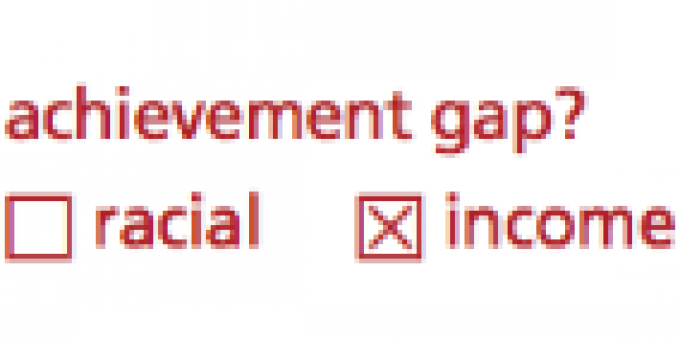
Mind Which Gap?
 Since the early nineteenth century, social reformers have been concerned with how different groups fare in school. In the early 1960s, researchers began to use the term “achievement gap” to describe the disparity in test scores between white and minority students in elementary school.
Since the early nineteenth century, social reformers have been concerned with how different groups fare in school. In the early 1960s, researchers began to use the term “achievement gap” to describe the disparity in test scores between white and minority students in elementary school.
But which achievement gap are they talking about today?
A 2011 study by sociologist Sean F. Reardon suggests that while the racial achievement gap has narrowed significantly over the past few decades, the income-based achievement gap is now double its size. In many states, proficiency gaps of 25 points or more separate students from lowincome families and others.
No Child Left Behind (NCLB), introduced in 2001, tries to close achievement gaps among traditionally disadvantaged groups by creating a system of sanctions for schools failing to make adequate yearly progress on standardized tests. Despite these efforts, in 2009 U.S. students ranked 14th in literacy, 25th in math, and 17th in science in the Programme for International Student Assessment, giving fuel to President Barack Obama’s “Race to the Top” initiative and ongoing reforms to NCLB.
In a recent book, education researchers Thomas B. Timar and Julie Maxwell-Jolly offer strategies for alleviating achievement gaps: improving school and teacher quality, adopting evidence-based instructional strategies, and partnering with families and communities (Narrowing the Achievement Gap: Perspectives and Strategies for Challenging Times, 2012). But as patterns of inequality change, what the achievement gap actually measures is bound to be a subject of debate, as is the question of whether test scores are the most meaningful educational outcome social scientists can measure.
